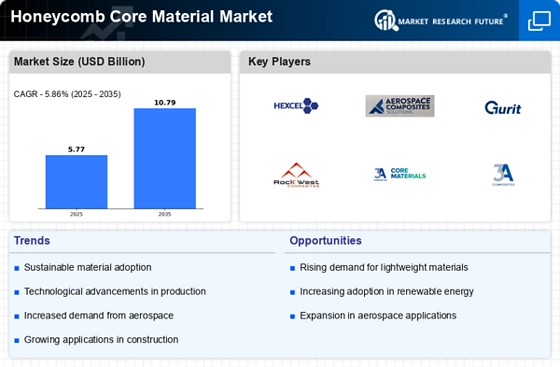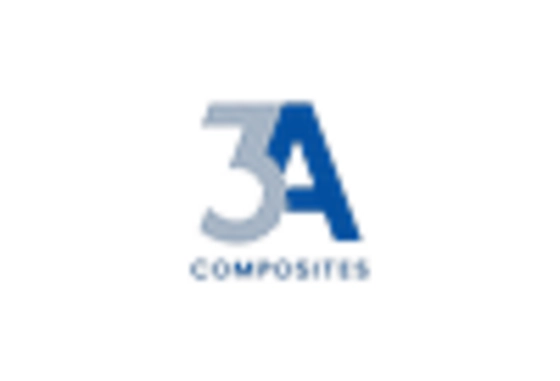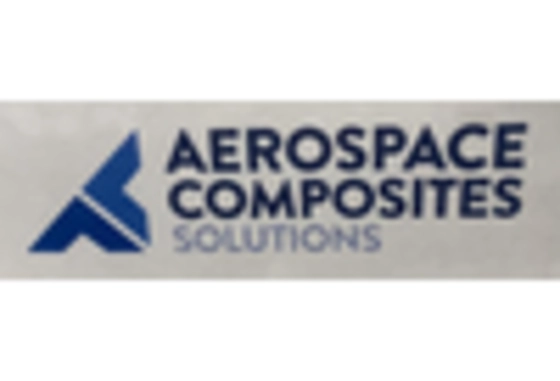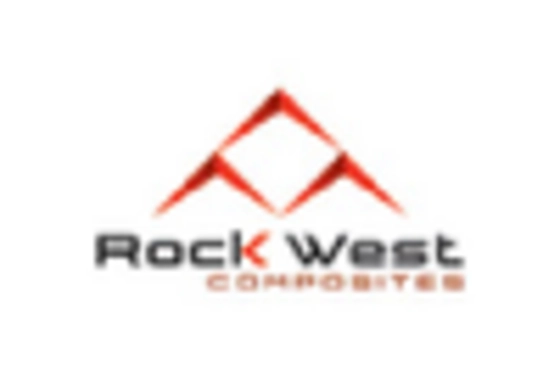Lightweight Construction
The demand for lightweight materials in various industries, particularly aerospace and automotive, is propelling the Honeycomb Core Material Market. Honeycomb core materials are renowned for their exceptional strength-to-weight ratio, making them ideal for applications where weight reduction is critical. For instance, in the aerospace sector, reducing weight can lead to substantial fuel savings and improved performance. Recent studies suggest that the use of honeycomb core materials can reduce component weight by up to 50% compared to traditional materials. This characteristic is increasingly appealing to manufacturers seeking to enhance efficiency and reduce operational costs, thereby driving growth in the Honeycomb Core Material Market.
Technological Innovations
Technological advancements are playing a pivotal role in shaping the Honeycomb Core Material Market. Innovations in manufacturing processes, such as advanced composite technologies and automated production techniques, are enhancing the performance and quality of honeycomb core materials. These advancements enable the production of materials with superior mechanical properties and reduced production costs. Furthermore, the integration of smart technologies, such as sensors within honeycomb structures, is opening new avenues for applications in various sectors, including construction and automotive. As these technologies continue to evolve, they are likely to create new opportunities for growth and diversification within the Honeycomb Core Material Market.
Sustainability Initiatives
The increasing emphasis on sustainability within the Honeycomb Core Material Market is driving demand for eco-friendly materials. Manufacturers are increasingly adopting sustainable practices, such as utilizing recycled materials in production. This shift not only reduces environmental impact but also aligns with consumer preferences for greener products. As a result, the market is witnessing a rise in the adoption of bio-based and recyclable honeycomb core materials. According to recent data, the market for sustainable materials is projected to grow at a compound annual growth rate of approximately 8% over the next five years. This trend indicates a significant opportunity for companies that prioritize sustainability in their product offerings, potentially enhancing their competitive edge in the Honeycomb Core Material Market.
Customization and Versatility
The versatility of honeycomb core materials is a key driver in the Honeycomb Core Material Market. These materials can be tailored to meet specific requirements across various applications, including automotive, construction, and marine industries. The ability to customize properties such as thickness, density, and material composition allows manufacturers to create solutions that cater to diverse needs. This adaptability is particularly appealing in industries where performance specifications are stringent. As companies increasingly seek materials that can be customized for unique applications, the demand for honeycomb core materials is expected to rise. This trend highlights the importance of versatility in driving innovation and growth within the Honeycomb Core Material Market.
Growing Demand in Aerospace Sector
The aerospace sector is a significant driver of growth in the Honeycomb Core Material Market. The increasing production of commercial and military aircraft necessitates the use of lightweight and durable materials to enhance fuel efficiency and performance. Honeycomb core materials are extensively utilized in aircraft interiors, wings, and fuselage components due to their lightweight properties and structural integrity. Recent forecasts indicate that the aerospace industry is expected to expand at a rate of approximately 5% annually, further fueling the demand for honeycomb core materials. This trend underscores the critical role that the aerospace sector plays in the overall growth trajectory of the Honeycomb Core Material Market.

















Leave a Comment